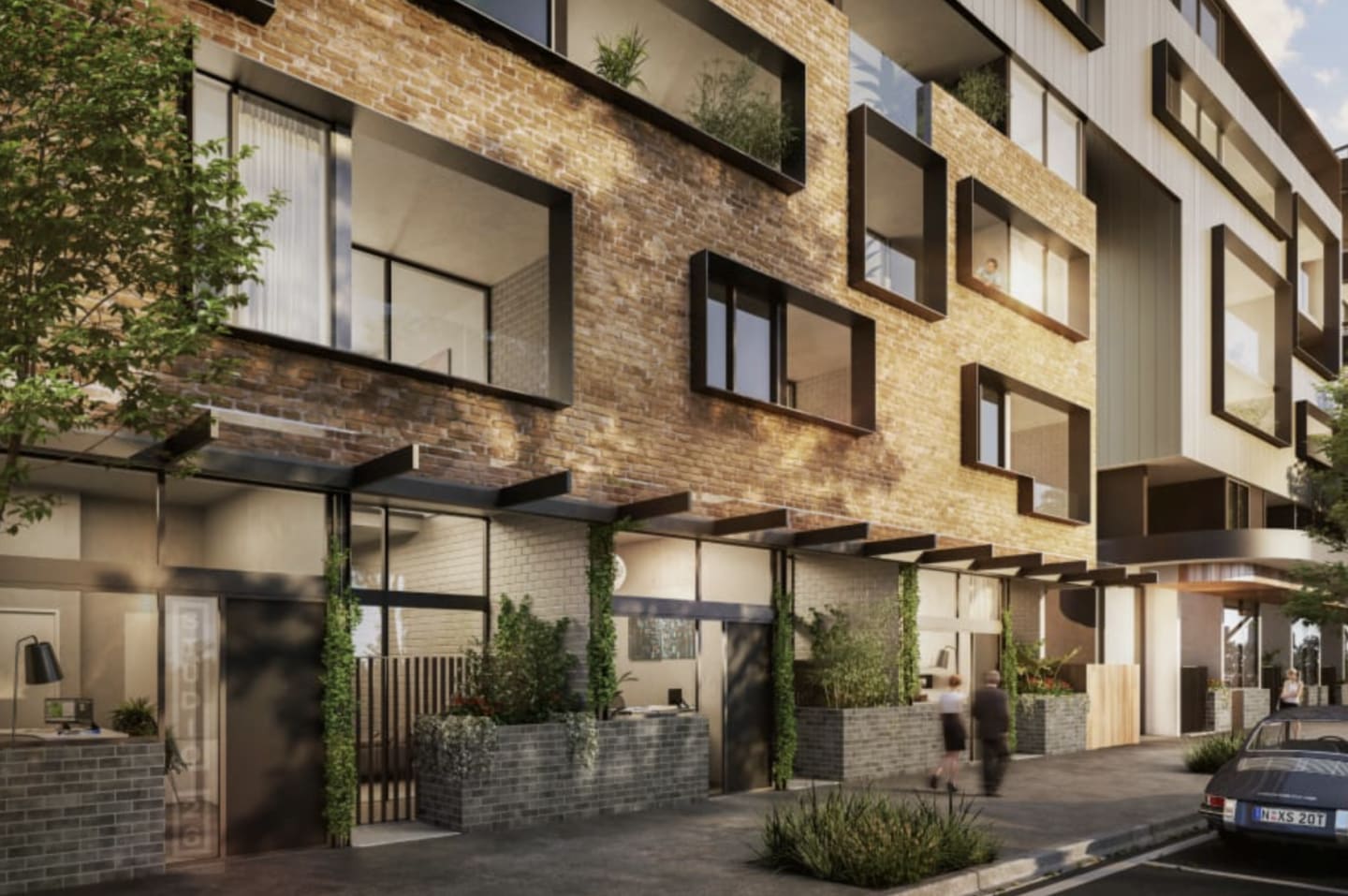How a Footscray car yard was transformed into a community-focussed precinct
The brief for Cowper Residences in Footscray was straightforward enough: a residential community of around 400 homes, designed for enduring value and built to last using high-quality materials.
The triangular Cowper Street site however presented multiple challenges along with extraordinary opportunities.
Toby Lauchlan, multi-residential partner at community-focused design studio ClarkeHopkinsClarke Architects, says the highly collaborative client and project team saw a great location for an inclusive, walkable community of flexible typologies to suit diverse residents who value quality materiality and seamless connections to each other and the broader neighbourhood.
“The site was zoned for six and 10 storeys but it wasn’t huge, and it had three very different interfaces with surrounding streetscapes,” Lauchlan said.
“The residential interface along Cowper Street was single story, and the other boundaries were hard up against the rail line and Hopkins Street, one of Footscray’s busiest mixed-used streets. But the site was literally surrounded by everything that makes Footscray great - a very diverse neighbourhood, industrial architecture with loads of character, fantastic amenities including public transport, retail, hospitality, arts and culture, employment, and education. Plus local institutions like Footscray Market and Flemington Racecourse, and incredible views in all directions."
Lauchlan said they knew they needed to avoid a singular expression and provide an answer that was multi-faceted, with a diversity of spaces, heights, scales and materials.
"It had to be a fine grain collection of buildings connected by communal spaces including beautiful landscaped gardens and terraces, all which would contribute to the character of Cowper Street and the broader neighbourhood.”
Instead of simply going upwards, like so many surrounding developments, the architects drew on ClarkeHopkinsClarke Architects’ distinctive Creating Vibrant Communities methodology and urban design expertise to maximise the entire site.
Double-height SOHOs and three-storey townhouses are located along and off low-rise Cowper Street. Six and 10-storey apartment precincts are set back towards the rail line and Hopkins Street interface.
At ground level, an entry plaza accommodates retail and hospitality tenancies and leads to a welcoming landscaped courtyard on the expansive podium. These communal spaces are destinations in themselves, not merely thoroughfares, with the built form and landscaping maximise 360-degree views.
Multiple entry and exit points create easy flow and surrounding connections. SOHOs and retail and café tenancies activate the ground plane. A new side street, unusual in a development of this size, creates a townhouse precinct for larger homes with separate entrances.
The design considers residents’ interactions, outlooks and public-private interface, and connects them in multiple ways to Footscray’s bustling activity and to each other – via the podium-level gym with multiple access points and gobsmacking views, for example, and shorter-than-usual apartment corridors, which increase casual interactions between neighbours.
The 364 apartments, 16 townhouses and 10 SOHOs each required distinctive, complementary architectural forms and interior identities, and options for residents to upgrade to deluxe finishes and fixtures.
ClarkeHopkinsClarke senior interior designer, Sa Bayley, capitalised on the apartments’ spacious, light-filled interiors with warm tones, natural palettes and textured materials including charcoal groove feature panelling, refined bathroom tiles and engineered timber flooring.
Corridors awash with views and natural light feature Deco-inspired way finding, timber-texture ceiling battens, graphic wall murals and subtle differences on each level, avoiding hotel-like sameness.
The SOHOs are warehouse loft-like spaces with warm textures and industrial touches like exposed brick facades, warm concrete ceilings, groove panel joinery, crisp white walls, balustrades of black powder-coated steel and mesh and exposed track lights.
Their flexible floorplans feature a gorgeous, glazed, street-front office with its own entry and views onto tree-lined Cowper Street. For those not running a business from home these spaces are also being used as dens, studies or additional bedrooms or living spaces.
With 3.7-metre-high ceilings and clerestory windows, these refined spaces feel particularly voluminous. The SOHOs also feature a private courtyard with separate entry directly into the home’s main living and dining spaces, and bedrooms and balconies energised by city views.
In a new side-street introduced to create a comfortable spaciousness within and between residential precincts, three-storey, three-bedroom townhouses provide similarly flexible floorplans, making them easy to re-configure over time as needs and preferences change.
They all feature private entrances, balconies, courtyards and high-end fixtures and fittings, with upgrade options including brass tapware and Herringbone floors.
Residential precincts are linked by abundant landscaping designed by MDG Landscape Architects. This includes private courtyards, terraces and balconies as well as communal spaces like the central courtyard and the rooftop gardens and terraces atop the apartment precincts. Planting is a lush mix of natives, flowering trees, vines and grasses.
Precincts and buildings are oriented, constructed and specified for passive solar design, maximising natural light, ventilation, thermal mass, acoustic privacy, rainwater collection and indoor-outdoor connectivity.
They also maximise views in all directions, from the glazed southern wall of the gym to terraces with vistas of the docks and considered framing of city and treetop-views in the apartment precincts’ shared corridors and lift lobbies.
